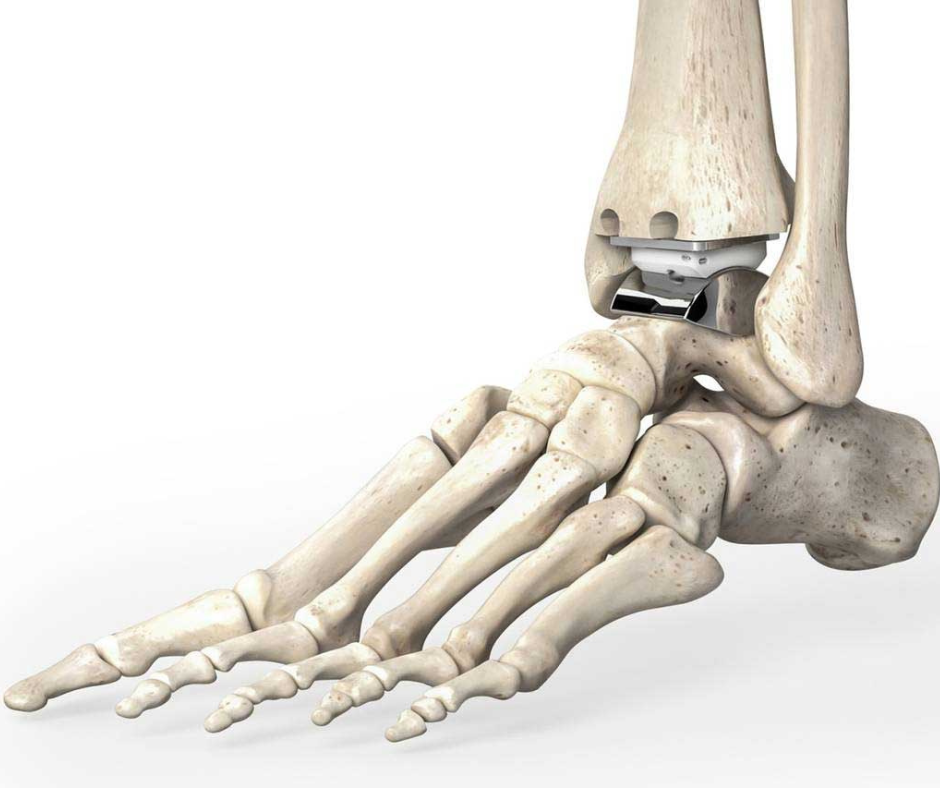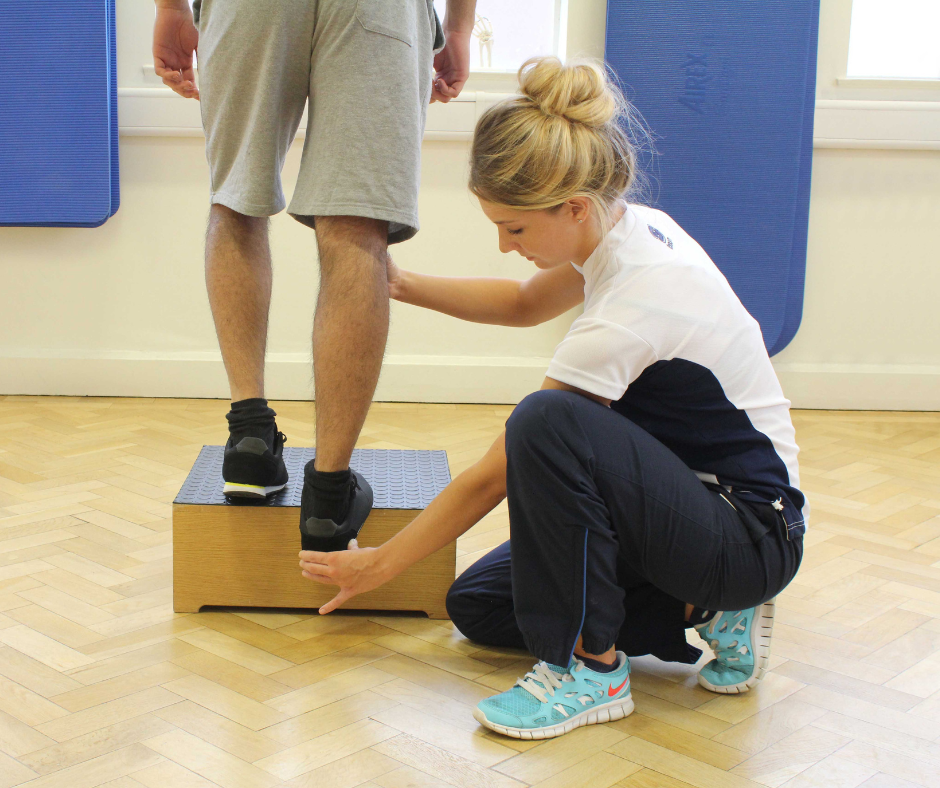Total Ankle joint Replacement

Introduction to Total Ankle joint Replacement
Total ankle joint replacement, or total ankle arthroplasty, is a surgical procedure that aims to relieve pain and restore functionality in individuals suffering from ankle arthritis. This procedure involves replacing the damaged ankle joint with artificial implants made of metal and plastic components. By recreating the natural joint mechanics, total ankle joint replacement provides pain relief and allows patients to regain mobility.
Total ankle joint replacement has gained popularity due to its ability to preserve ankle motion, protect surrounding joints from increased wear, and improve overall quality of life. This procedure is typically recommended for individuals who have exhausted conservative treatments and continue to experience ankle pain and decreased function.
Understanding Ankle Arthritis
Ankle arthritis is a condition characterized by the degeneration of the cartilage that covers the bones in the ankle joint. This degeneration can occur due to the normal aging process, wear and tear, previous injuries such as ankle fractures or dislocations, or certain underlying health conditions. When the cartilage becomes thin and rough, it leads to joint pain, stiffness, and deformity.
Ankle arthritis can be caused by various factors, including:
1. Normal wear and tear associated with aging.
2. Previous ankle injuries or fractures
3. Repeated ankle dislocations
4. Rheumatoid arthritis
5. Osteoarthritis
6. Post-traumatic arthritis
The common symptoms of ankle arthritis include:
1. Persistent joint pain
2. Swelling and inflammation
3. Stiffness and limited range of motion
4. Difficulty walking or bearing weight
5. Instability and deformity
Diagnosis and Candidacy for Total Ankle Joint Replacement
If you have tried non-surgical treatments for ankle arthritis but continue to experience persistent pain and functional limitations, it may be time to consider total ankle joint replacement. However, not everyone is a suitable candidate for this procedure. Your foot and ankle orthopedic surgeon will carefully evaluate your condition and medical history to determine if total ankle joint replacement is appropriate for you.
1. Severe ankle deformities or instability
2. Dead bone in the talus (bottom bone of the ankle joint)
3. Inadequate bone quality to support the joint implants
4. History of deep infections or poor wound healing
5. Significantly abnormal nerve function or sensation
6. Circulatory problems or compromised blood flow to the ankle
7. Conditions such as diabetes or obesity
A thorough physical examination, medical imaging, and discussion of your symptoms and treatment goals will help your surgeon determine the most suitable course of action. In some cases, ankle fusion or ankle arthroscopy may be recommended as alternatives to total ankle joint replacement.

Alternatives to Total Ankle Joint Replacement
While total ankle joint replacement has become the preferred option for many individuals with ankle arthritis, there are alternative surgical procedures to consider. Ankle fusion surgery and ankle arthroscopy may be appropriate in certain cases, and your foot and ankle orthopedic surgeon will help you decide which procedure aligns best with your specific needs and lifestyle.
Ankle fusion, also known as ankle arthrodesis, involves permanently joining the ankle bones together to eliminate movement in the joint. During this procedure, the damaged surfaces of the bones are removed, and the bones are then fixed in a position that allows them to grow together. Ankle fusion is recommended for individuals with severe ankle arthritis who have significant pain and instability.
While ankle fusion provides pain relief, it limits the range of motion in the ankle joint. This altered biomechanics can affect walking and may increase stress on neighboring joints, potentially leading to the development of arthritis in those joints.
Ankle arthroscopy is a minimally invasive surgical procedure that allows the surgeon to visualize, diagnose, and treat various ankle conditions. It involves making small incisions and inserting a tiny camera and specialized instruments into the joint. Ankle arthroscopy can be used to remove loose fragments, repair damaged cartilage, or address certain ankle injuries. However, it is not typically a primary treatment option for ankle arthritis.
Your foot and ankle orthopedic surgeon will assess your condition and discuss the benefits and limitations of each surgical alternative before recommending the most appropriate course of action.
Ankle arthroscopy cost varies somewhere between 1500 USD to 6000 USD depending on the condition of the joint.

Preparation for Total Ankle Arthroplasty
Before undergoing total ankle joint replacement, adequate preparation is essential to ensure a smooth surgical experience and optimal recovery. Your care team will guide you through the preoperative process to help you understand what to expect and make necessary arrangements.
Engaging in pre-operative physical therapy can be beneficial in improving your overall strength, flexibility, and range of motion. Your physical therapist will develop a tailored exercise program to help you prepare for surgery and optimize your post-operative rehabilitation.
Making certain lifestyle modifications can contribute to a successful total ankle replacement surgery and recovery. For example, if you are a smoker, quitting smoking before surgery can significantly reduce the risk of complications and enhance the healing process. Additionally, maintaining a healthy body weight can alleviate stress on the ankle joint and promote better outcomes.
Your healthcare provider may recommend adjusting certain medications prior to surgery. For example, blood-thinning medications may need to be temporarily discontinued to minimize the risk of excessive bleeding during the procedure. It is important to discuss your medication regimen with your healthcare team to ensure proper management leading up to the surgery.
By following the guidance provided by your care team and preparing both physically and mentally for the procedure, you can optimize your chances of a successful outcome.
The Total Ankle Joint Replacement Procedure
Total ankle joint replacement is a complex surgical procedure that requires the expertise of a foot and ankle orthopedic surgeon. The surgery is performed under general anesthesia or nerve block, and a team of healthcare professionals, including anesthesiologists and nurses, work together to ensure your safety and comfort throughout the procedure.
The surgical steps involved in total ankle joint replacement are as follows
You will receive either general anesthesia or a nerve block to numb the surgical area. Your surgeon will make an incision in the front or side of the ankle to access the joint.
The surgeon will remove the degenerated bone and cartilage surfaces of the ankle joint, creating space for the artificial implants.
The metal and plastic components of the ankle replacement prosthesis will be carefully inserted and secured onto the prepared bone surfaces. These components mimic the natural joint mechanics and allow for improved ankle motion.
In some cases, additional procedures may be performed to correct any deformities or alignment issues in the foot and ankle. This ensures proper joint function and alignment after the ankle replacement surgery.
Once the procedure is completed, your surgeon will close the incision using stitches or staples and apply a splint or cast to protect the ankle during the initial healing phase.
Recovery and Rehabilitation
Recovery from total ankle joint replacement surgery requires time, patience, and active participation in rehabilitation. The duration of the recovery period can vary but typically ranges from six to twelve months. During this time, you will follow a gradual progression of weight bearing and physical therapy to regain strength, mobility, and function in the ankle.
Immediately following surgery, you will typically be instructed to avoid putting weight on the operated ankle. This non-weight bearing period allows the implants to heal and integrate with the bone. You may be provided with crutches, a walker, or a specialized boot to assist with mobility during this phase.
Total ankle joint replacement is usually performed as an inpatient procedure, meaning you will spend one or more nights in the hospital for close monitoring and post-operative care. However, in some cases, outpatient total ankle joint replacement surgery may be considered, allowing you to return home on the same day.
Elevation of the operated leg is crucial during the early stages of recovery to minimize swelling and promote proper wound healing. Your surgeon will provide specific instructions on how to elevate your leg effectively and manage post-operative swelling.
Physical therapy plays a vital role in your recovery journey after total ankle joint replacement. Under the guidance of a qualified physical therapist, you will engage in exercises and activities aimed at improving ankle strength, flexibility, and balance. The physical therapist will also guide you through gait training and other functional exercises to help you regain normal walking patterns.
Risks and Complications of Ankle Joint Replacement
As with any surgical procedure, total ankle joint replacement carries certain risks and potential complications. It is essential to be aware of these possibilities and discuss them with your foot and ankle orthopedic surgeon before making a decision.
While total ankle joint replacement is generally successful in relieving pain and improving functionality, there is a small risk of implant failure. Over time, the artificial components may loosen, wear down, or experience mechanical issues that require additional surgery or revision.
Infections can occur following total ankle joint replacement surgery, although they are relatively rare. Proper wound care, adherence to antibiotic regimens, and close monitoring by your healthcare team are essential in preventing and managing infections. Delayed wound healing or poor wound closure may also occur, particularly in individuals with certain medical conditions or poor circulation.
Comparison: Ankle Replacement vs. Ankle Fusion
When considering treatment options for end-stage ankle arthritis, it is important to understand the key differences between total ankle replacement and ankle fusion. Each procedure has its advantages and considerations, and the decision should be made in consultation with your foot and ankle orthopedic surgeon.
One of the main distinctions between ankle replacement and ankle fusion is the preservation of motion. Total ankle joint replacement allows for continued ankle motion, which can result in improved walking patterns and a more natural gait. In contrast, ankle fusion eliminates motion in the ankle joint by permanently fusing the bones together. While ankle fusion provides pain relief, it restricts ankle motion and can affect adjacent joints.
Ankle replacement has the advantage of preserving ankle motion, which can help alleviate stress on neighboring joints and potentially reduce the risk of developing arthritis in those joints. Ankle fusion, on the other hand, alters the mechanics of the foot and ankle, potentially increasing stress on adjacent joints and leading to arthritis in the long term.
The decision between ankle replacement and ankle fusion should be made based on a thorough evaluation of your condition, lifestyle, and goals. Your foot and ankle orthopedic surgeon will guide you in determining the most appropriate surgical option for your specific needs.
Ankle joint replacement cost:
In India, the ankle joint replacement surgery cost is generally between USD 6000 and USD 9000. The actual price may vary depending on factors such as the location of the hospital and the experience of the orthopedic surgeon. It’s important to note that this price typically does not include the expenses for post-operative physiotherapy programs. Additionally, there may be additional costs associated with pre-surgical diagnostics and consultations
Conclusion
Total ankle joint replacement, or total ankle arthroplasty, is a surgical procedure that offers hope and relief for individuals suffering from ankle arthritis. By replacing the damaged joint with artificial implants, total ankle joint replacement aims to alleviate pain, restore function, and improve quality of life. Although the procedure carries certain risks and requires a dedicated recovery period, it has shown promising results in preserving ankle motion and protecting surrounding joints.
If you are considering total ankle replacement, it is crucial to consult with a qualified foot and ankle orthopedic surgeon who can evaluate your condition, discuss the available treatment options, and guide you towards the best course of action. With proper preparation, diligent rehabilitation, and ongoing care, total ankle joint replacement can be a life-changing procedure that enhances your mobility and frees you from the limitations imposed by ankle arthritis.

